Certification of SRM1960: Nominal 10 μm Diameter Polystyrene Spheres ("Space Beads")
- PMID: 28184141
- PMCID: PMC4915770
- DOI: 10.6028/jres.096.044
Certification of SRM1960: Nominal 10 μm Diameter Polystyrene Spheres ("Space Beads")
Abstract
Experimental, theoretical, and calculational details are presented for the three independent micrometrology techniques used to certify the mean diameter of Standard Reference Materisd 1960, nominal 10 μm diameter polystyrene spheres ("space beads"). The mean diameters determined by the three techniques agreed remarkably well, with all measurements within 0.1% of each other, an unprecedented achievement in the dimensional metrology of microspheres. Center distance finding (CDF), a method based on optical microscopy, gave a value of 9.89 ± 0.04 μm, which was chosen to be the certified mean diameter. The supporting measurements were done using metrology electron microscopy (MEM) and resonance light scattering (RLS). The MEM technique, based on scanning electron microscopy, yielded 9.89±0.06 μm for the mean diameter of the microspheres in vacuum, while the RLS value was 9.90 ±0.03 μm for the microspheres in liquid suspension. The main peak of the diameter distribution for SRM 1960 is nearly Gaussian with a certified standard deviation of 0.09 μm, as determined by CDF. Off the main peak, there are about 1% oversized particles and a negligible amount of undersized particles. The report gives a detailed description of the apparatus, the experimental methods, the data-reduction techniques, and an error analysis for each of the micro-metrology techniques. A distinctive characteristic of this SRM is that it was manufactured in microgravity aboard the NASA space shuttle Challenger and is the first commercial product to be made in space.
Keywords: Electron microscopy; length; light scattering; metrology; microgravity; micrometrology; microscopy; microspheres; particle sizing; particles; polystyrene spheres; reference materials; sizing; standards.
Figures

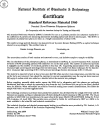

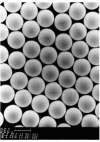


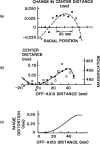



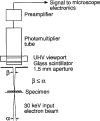


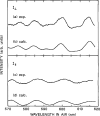

References
-
- Lettieri TR. In: Optical Particle Sizing: Theory and Practice. Gouesbet G, Grehan G, editors. Plenum; New York: 1988.
-
- McKenzie RL, editor. Natl Inst Stand Technol. Gaithersburg, MD: 1990. NIST Standard Reference Materials Catalog 1990–1991.
-
- Lettieri TR, Hartman AW, Hembree GG, Mart E. J Coll Int Sci. 1989;131:550.
-
- Hartman AW, McKenzie RL. Description of the SRM 1965 Microsphere Slide. Natl. Inst. Stand. Technol.; Gaithersburg, MD: 1988. (NIST SP260-107).
-
- Mulholland G, Hembree G, Hartman AW. Sizing of Polystyrene Spheres Produced in Microgravity. Natl. Bur. Stand. (U.S.); Gaithersburg, MD: 1985. (NBSIR 84-2914).
LinkOut - more resources
Full Text Sources
